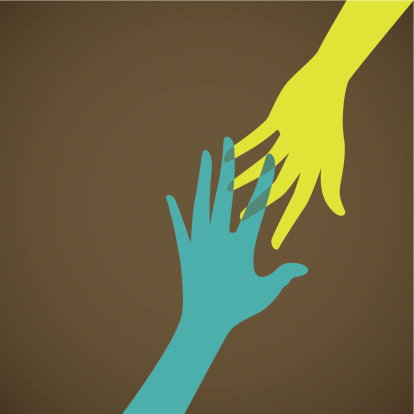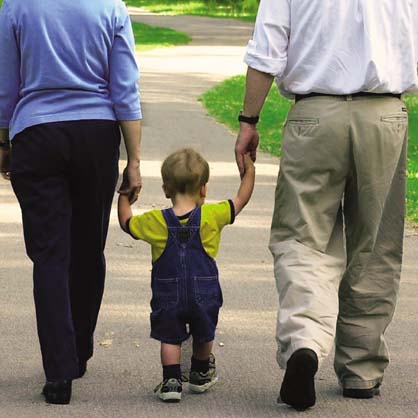
Because of our great medical facilities, people often say that Minnesota might be the best place in the world to get sick. What is less known is that Minnesota is rapidly becoming known as the best place for an ailing marriage too. Indeed, just as people travel all over the world to come to the Mayo Clinic to heal their bodies, people from around the world occasionally travel to Minnesota to observe the ways that we heal conflict.
Last month, two family law attorneys from Cape Town, South Africa, spent most of the month of May at the Collaborative Alliance in Edina, observing many of our Collaborative divorce professionals so that they can improve the way family conflict is handled in their country. Two weeks earlier, a family law attorney from Rio de Janeiro, Brazil, visited the Collaborative Alliance space and asked if she could also send an observer from her country in the upcoming months. Indeed, we have hosted family law professionals from five different countries and nearly every state during the past six years.
I realize that, if you have a healthy marriage, finding that Minnesota is a great place for a divorce may not be reason to jump up for joy. No one wants to be in the position to need a divorce lawyer anymore than anyone wants to need a good oncologist. But, if you are facing serious problems, it’s nice to know you can reach out and find some of the very best in the world.
So, why is Minnesota an international leader in handling conflict? Is it because of our superior laws, our better courts, better law schools are lawyers? Well, in fact, while all of those things are very good in our state, the thing that is causing people to travel to Minnesota from afar is our innovation. Divorce causes great pain around the world and nearly everyone is desperate to find a better way. Minnesota is, among other things, the birthplace of Collaborative Law, a method of handling divorce that has spared tens of thousands of families. To learn more about Collaborative Practice, go to
www.collaborativelaw.org.
As someone who has handled hundreds of Collaborative divorce (as well as hundreds of traditional divorces), I am not surprised that people from around the United States would want to learn about this better method. However, I admit that I was a bit surprised to learn that about the great interest all around the world. I have had the opportunity to conduct workshops and trainings on Collaborative law throughout the world and I have observed great differences in their laws and in their cultural norms. What has surprised me is that, when it comes to basic issues, protecting children, reducing conflict, reducing costs we are all facing the same issue. Collaborative Divorce is more effective, not because of something unique to Minnesotan or Americans, but because if makes divorce more human. And that is a language that is understood all around the world.
 I recently attended a symposium about divorce entitled, “What’s Love Got to Do With It?” At first glance you might wonder whether we had anything to talk about. What do love and divorce have in common? Isn’t divorce the result of the loss of love? Sharing ideas with others interested in improving the divorce process reinforced my belief that love, forgiveness and compassion are the keys to divorcing well, and that divorce can indeed be a healing process.
Divorce is an all-too-common event these days. We all have friends, family members, neighbors and co-workers who have experienced becoming unmarried. Some just barely survive and are stuck looking back at their divorce with regret and resentment. Years later they continue to bad-mouth their ex and blame their divorce for their ongoing unhappiness. Their inability to be present and available has long-term consequences for their children as well.
Most of us also know people who not only survive, but thrive in their post-divorce lives. They are somehow able to accept the major changes in their day-to-day lives and move forward. By doing so, they are healthy role models for their children and fun to be around. What accounts for these vastly different outcomes?
Personality certainly has something to do with it. Some humans are blessed with more optimistic outlooks than others. Seeing the glass half full reduces anxiety about the future. Life circumstances also play a role. Good health, steady employment, and a healthy balance sheet contribute to feeling better about what lies ahead. However, several decades of experience tells me that one factor trumps everything else in terms of one’s ability to recover from divorce … the ability to forgive.
Anger, bitterness, blame and resentment are feelings associated with the loss of a loving relationship. Grieving the loss is necessary in order to get on with life. Tara Brach, a leading western teacher of Buddhist meditation, emotional healing and spiritual awakening, who was a symposium presenter, says, “Vengeance is a lazy form of grief.” Rather than being lazy and stuck, working through one’s grief with a therapist, clergy person, or trusted friend can lead to understanding and forgiveness. Acknowledgment and forgiveness of one’s own contributions to the divorce are essential, as is forgiveness of the other person.
In the Collaborative divorce process, our professional team includes a neutral coach and a child specialist, both of whom assist the parties in reaching closure with regard to their marriage and defining their future co-parenting relationship.
“When you forgive somebody who has wronged you, you’re spared the dismal corrosion of bitterness and wounded pride. For both parties, forgiveness means the freedom again to be at peace inside their own skins and to be glad in each others’ presence.”
-Fredrick Buechner
I recently attended a symposium about divorce entitled, “What’s Love Got to Do With It?” At first glance you might wonder whether we had anything to talk about. What do love and divorce have in common? Isn’t divorce the result of the loss of love? Sharing ideas with others interested in improving the divorce process reinforced my belief that love, forgiveness and compassion are the keys to divorcing well, and that divorce can indeed be a healing process.
Divorce is an all-too-common event these days. We all have friends, family members, neighbors and co-workers who have experienced becoming unmarried. Some just barely survive and are stuck looking back at their divorce with regret and resentment. Years later they continue to bad-mouth their ex and blame their divorce for their ongoing unhappiness. Their inability to be present and available has long-term consequences for their children as well.
Most of us also know people who not only survive, but thrive in their post-divorce lives. They are somehow able to accept the major changes in their day-to-day lives and move forward. By doing so, they are healthy role models for their children and fun to be around. What accounts for these vastly different outcomes?
Personality certainly has something to do with it. Some humans are blessed with more optimistic outlooks than others. Seeing the glass half full reduces anxiety about the future. Life circumstances also play a role. Good health, steady employment, and a healthy balance sheet contribute to feeling better about what lies ahead. However, several decades of experience tells me that one factor trumps everything else in terms of one’s ability to recover from divorce … the ability to forgive.
Anger, bitterness, blame and resentment are feelings associated with the loss of a loving relationship. Grieving the loss is necessary in order to get on with life. Tara Brach, a leading western teacher of Buddhist meditation, emotional healing and spiritual awakening, who was a symposium presenter, says, “Vengeance is a lazy form of grief.” Rather than being lazy and stuck, working through one’s grief with a therapist, clergy person, or trusted friend can lead to understanding and forgiveness. Acknowledgment and forgiveness of one’s own contributions to the divorce are essential, as is forgiveness of the other person.
In the Collaborative divorce process, our professional team includes a neutral coach and a child specialist, both of whom assist the parties in reaching closure with regard to their marriage and defining their future co-parenting relationship.
“When you forgive somebody who has wronged you, you’re spared the dismal corrosion of bitterness and wounded pride. For both parties, forgiveness means the freedom again to be at peace inside their own skins and to be glad in each others’ presence.”
-Fredrick Buechner  I recently attended a symposium about divorce entitled, “What’s Love Got to Do With It?” At first glance you might wonder whether we had anything to talk about. What do love and divorce have in common? Isn’t divorce the result of the loss of love? Sharing ideas with others interested in improving the divorce process reinforced my belief that love, forgiveness and compassion are the keys to divorcing well, and that divorce can indeed be a healing process.
Divorce is an all-too-common event these days. We all have friends, family members, neighbors and co-workers who have experienced becoming unmarried. Some just barely survive and are stuck looking back at their divorce with regret and resentment. Years later they continue to bad-mouth their ex and blame their divorce for their ongoing unhappiness. Their inability to be present and available has long-term consequences for their children as well.
Most of us also know people who not only survive, but thrive in their post-divorce lives. They are somehow able to accept the major changes in their day-to-day lives and move forward. By doing so, they are healthy role models for their children and fun to be around. What accounts for these vastly different outcomes?
Personality certainly has something to do with it. Some humans are blessed with more optimistic outlooks than others. Seeing the glass half full reduces anxiety about the future. Life circumstances also play a role. Good health, steady employment, and a healthy balance sheet contribute to feeling better about what lies ahead. However, several decades of experience tells me that one factor trumps everything else in terms of one’s ability to recover from divorce … the ability to forgive.
Anger, bitterness, blame and resentment are feelings associated with the loss of a loving relationship. Grieving the loss is necessary in order to get on with life. Tara Brach, a leading western teacher of Buddhist meditation, emotional healing and spiritual awakening, who was a symposium presenter, says, “Vengeance is a lazy form of grief.” Rather than being lazy and stuck, working through one’s grief with a therapist, clergy person, or trusted friend can lead to understanding and forgiveness. Acknowledgment and forgiveness of one’s own contributions to the divorce are essential, as is forgiveness of the other person.
In the Collaborative divorce process, our professional team includes a neutral coach and a child specialist, both of whom assist the parties in reaching closure with regard to their marriage and defining their future co-parenting relationship.
“When you forgive somebody who has wronged you, you’re spared the dismal corrosion of bitterness and wounded pride. For both parties, forgiveness means the freedom again to be at peace inside their own skins and to be glad in each others’ presence.”
-Fredrick Buechner
I recently attended a symposium about divorce entitled, “What’s Love Got to Do With It?” At first glance you might wonder whether we had anything to talk about. What do love and divorce have in common? Isn’t divorce the result of the loss of love? Sharing ideas with others interested in improving the divorce process reinforced my belief that love, forgiveness and compassion are the keys to divorcing well, and that divorce can indeed be a healing process.
Divorce is an all-too-common event these days. We all have friends, family members, neighbors and co-workers who have experienced becoming unmarried. Some just barely survive and are stuck looking back at their divorce with regret and resentment. Years later they continue to bad-mouth their ex and blame their divorce for their ongoing unhappiness. Their inability to be present and available has long-term consequences for their children as well.
Most of us also know people who not only survive, but thrive in their post-divorce lives. They are somehow able to accept the major changes in their day-to-day lives and move forward. By doing so, they are healthy role models for their children and fun to be around. What accounts for these vastly different outcomes?
Personality certainly has something to do with it. Some humans are blessed with more optimistic outlooks than others. Seeing the glass half full reduces anxiety about the future. Life circumstances also play a role. Good health, steady employment, and a healthy balance sheet contribute to feeling better about what lies ahead. However, several decades of experience tells me that one factor trumps everything else in terms of one’s ability to recover from divorce … the ability to forgive.
Anger, bitterness, blame and resentment are feelings associated with the loss of a loving relationship. Grieving the loss is necessary in order to get on with life. Tara Brach, a leading western teacher of Buddhist meditation, emotional healing and spiritual awakening, who was a symposium presenter, says, “Vengeance is a lazy form of grief.” Rather than being lazy and stuck, working through one’s grief with a therapist, clergy person, or trusted friend can lead to understanding and forgiveness. Acknowledgment and forgiveness of one’s own contributions to the divorce are essential, as is forgiveness of the other person.
In the Collaborative divorce process, our professional team includes a neutral coach and a child specialist, both of whom assist the parties in reaching closure with regard to their marriage and defining their future co-parenting relationship.
“When you forgive somebody who has wronged you, you’re spared the dismal corrosion of bitterness and wounded pride. For both parties, forgiveness means the freedom again to be at peace inside their own skins and to be glad in each others’ presence.”
-Fredrick Buechner 





 Unmarried and have children? You may be interested to know that “Collaborative Divorce” is not just for divorce. Learn how the collaborative process can help you.
First, it may be relieving to know that you are not alone. There are some interesting recent statistics related to marriage and children. Nearly half of children in America are born outside of marriage. And, for women under 30, most children are born outside of marriage.
Whether you are married or not, if you separate from the other parent, you’ll need to figure out custody, parenting time and financial support issues related to your children. These are legal issues that should be finalized in a court order, either by agreement reached in the collaborative process or mediation, or by a court decision after a trial.
There is a great online resource related to unmarried parents (useful to both unmarried mothers and unmarried fathers),
Unmarried and have children? You may be interested to know that “Collaborative Divorce” is not just for divorce. Learn how the collaborative process can help you.
First, it may be relieving to know that you are not alone. There are some interesting recent statistics related to marriage and children. Nearly half of children in America are born outside of marriage. And, for women under 30, most children are born outside of marriage.
Whether you are married or not, if you separate from the other parent, you’ll need to figure out custody, parenting time and financial support issues related to your children. These are legal issues that should be finalized in a court order, either by agreement reached in the collaborative process or mediation, or by a court decision after a trial.
There is a great online resource related to unmarried parents (useful to both unmarried mothers and unmarried fathers),  The “Rule of Relationship” is one of the most powerful forces in our lives. Often we are not even aware of its existence. In a divorce, it can be more powerful than the rule of law.
Here is how it works. Let’s assume you and your spouse are separated but you do not have any legal document regulating your separation or parenting. You have informally agreed to share weekends with the children and you pick the children up from your spouse’s home of Friday, promising to return them by 6:00 p.m. on Sunday. What if you decide not to return the children at that time? You will not have broken any law since there is no divorce or court order. Yet the consequences of your decision may be even more severe than any punishment a court could order as you have violated the “Rule of Relationship.” You may have damaged trust in a manner that could be very difficult to repair.
Maintaining some level of trust is crucial in almost all situations. It is tempting to think that, in a divorce, there is no trust. Indeed, your spouse may even have been unfaithful causing you to believe that all trust is lost. But, in reality, there is almost always some degree of trust that exists in any relationship. If you literally had no trust at all, you would not ever allow your spouse to even be in the presence of your children, since you need to trust them to provide for their well being and safety, for at least some portion of their week. Despite the broken promises that can give rise to a divorce, most people are able to find a way to retain some basic level of trust, out of necessity and concern for their children.
Trust is generally regulated by the “Rule of Relationship” and not by laws. Trust can only be created or lost through behavior. When it comes to regulating day to day behavior no court or government, no matter how well intended, can intervene on a daily basis to address these difficult situations. Parents are often left with their own laws, the Rule of Relationship,” to help them parent their children and regulate their lives. That is one of the reasons more and more parents are choosing out of court solutions, such as
The “Rule of Relationship” is one of the most powerful forces in our lives. Often we are not even aware of its existence. In a divorce, it can be more powerful than the rule of law.
Here is how it works. Let’s assume you and your spouse are separated but you do not have any legal document regulating your separation or parenting. You have informally agreed to share weekends with the children and you pick the children up from your spouse’s home of Friday, promising to return them by 6:00 p.m. on Sunday. What if you decide not to return the children at that time? You will not have broken any law since there is no divorce or court order. Yet the consequences of your decision may be even more severe than any punishment a court could order as you have violated the “Rule of Relationship.” You may have damaged trust in a manner that could be very difficult to repair.
Maintaining some level of trust is crucial in almost all situations. It is tempting to think that, in a divorce, there is no trust. Indeed, your spouse may even have been unfaithful causing you to believe that all trust is lost. But, in reality, there is almost always some degree of trust that exists in any relationship. If you literally had no trust at all, you would not ever allow your spouse to even be in the presence of your children, since you need to trust them to provide for their well being and safety, for at least some portion of their week. Despite the broken promises that can give rise to a divorce, most people are able to find a way to retain some basic level of trust, out of necessity and concern for their children.
Trust is generally regulated by the “Rule of Relationship” and not by laws. Trust can only be created or lost through behavior. When it comes to regulating day to day behavior no court or government, no matter how well intended, can intervene on a daily basis to address these difficult situations. Parents are often left with their own laws, the Rule of Relationship,” to help them parent their children and regulate their lives. That is one of the reasons more and more parents are choosing out of court solutions, such as 